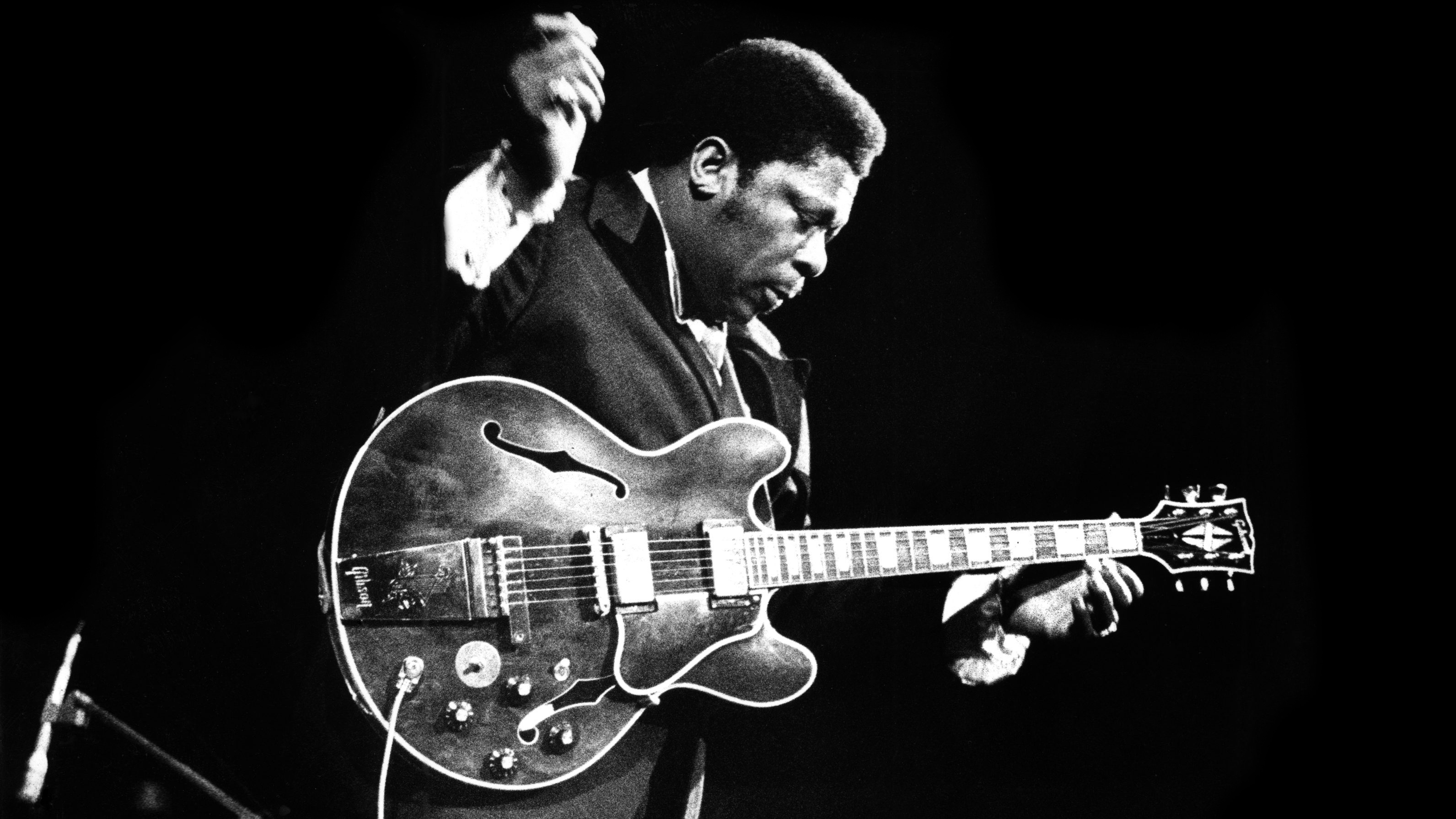Reaching an intermediate level of guitar playing is a great achievement, it means you have the discipline and perseverance to stick with what can be a very frustrating instrument to learn. It’s around this stage in your learning that it dawns on you how much there is to learn, as well as just how far you can go with the instrument, which is both exciting and daunting. It’s inevitable that you’ll reach this stage in your playing with more than a few holes in your knowledge, and if you want to get off the intermediate plateau and into advanced territory, it’s time to fill them in. So, here are 8 holes in your playing that might be holding you back, and what to do about them.
1. The Notes on the Neck
This is probably the number one thing that keeps guitarists on the intermediate plateau forever because, along with a serious study of intervals, it allows you to go beyond mere patterns and understand the theory behind them. This has a knock-on effect which will improve virtually every aspect of your playing because it allows you to understand things on a deeper level. For example, if I know that a Bm7b5 chord contains the notes B, D, F, and A (and the intervals 1, b3, b5, b7), I see that the top three notes (D, F, and A) form a D Minor triad which means I can improvise over a Bm7b5 chord by using D Minor triads. These kinds of connections are difficult to make with patterns because you simply never notice them.
2. Which Chords are in Which Keys
This is another one of those holes in your playing that gets overlooked by guitar players, especially of the rock and blues variety, as we’re used to playing in five or six different keys and barely need to worry about the others. This isn’t a problem if you at least know the chords in those keys, but a lot of players don’t. Make a point of learning which chords are in which keys. You can make this more interesting by learning a song that uses all the chords from a specific key. The song, ‘White Flag’ by Dido, while not a guitar classic, will help you remember all the chords in the key of F Major/D Minor because a) it contains all of them, and b) it’s horrendously catchy. Check out songkeyfinder.com to find songs in other keys that will help you remember the chords in the key. Knowing which chords are in which keys will supercharge your modal playing and help you resolve your scale choices much faster when you go to improvise.
3. Intervals
As I mentioned in point 1, a serious study of intervals and their locations on the fretboard will do wonders for any holes in your playing. It allows you to break free from patterns and start using chord, arpeggio and scale formulas to navigate your way around the fretboard. For example, if you wanted to learn an exotic scale such as the Hungarian Minor, you could simply apply the scale’s formula (1, 2, b3, #4, 5, b6, 7) to the fretboard instead of having to learn a ton of new patterns. From the scale’s formula, you’d also see that the only difference between this scale and the harmonic minor scale is the #4.
Check out our Melodic Soloing in 10 Days book for an intensive intervals workout.
4. Chord Shape Overload
You probably remember learning your first open chords on guitar, and the immense mileage to be had from them. You may have then progressed to barre chords and other forms, but you reach a point where the transition to constructing chords yourself must be made because of the sheer amount of chord permutations that exist on the guitar; in other words, it becomes extremely unproductive to continue learning and trying to remember chord shapes. What you need to do instead is take the interval structure and/or notes in the chord and start finding these on the fretboard. Take a chord such as C7: 1, 3, 5, b7 or C, E, G, Bb and start finding the notes or intervals yourself. This is the key to coming up with your own arrangements of tunes on the guitar, and will get you out of jail if someone asks you to play a Gmaj7#5 and you don’t know the shape for it.
5. Not Knowing Where to Start
This is particularly prevalent in self-taught players who haven’t studied under a structured syllabus or in some kind of formal setting. These days, the internet has got your back and I’d recommend getting hold of a course that covers pretty much everything from beginner to advanced so that a) you can see what a complete syllabus looks like, and b) have a well-structured order in which to start filling in the holes in your playing. For this task, there are three courses I’d recommend:
The Professional Guitar Masterclass by Michael Palmisano
Complete Guitar System – Beginner to Advanced by Erick Andreas
6. Arpeggios
If, like me, you have any not-so-fond memories of playing ‘etude’ style arpeggio patterns up and down the neck, you probably dismissed them as pointless and put them on the backburner. The way I see arpeggios is: pulling chord tones from a scale. An arpeggio in isolation is difficult to use and incorporate into your playing without it sounding forced. If you take a major scale pattern and play every other note, you’re playing an arpeggio. Check out the F Major 3NPS pattern below:

If I play every other note starting on F, I’m playing an F Major arpeggio and all of its diatonic extensions: Fmaj7, Fmaj9, Fmaj11, Fmaj13 etc. If I start from G and play every other note, I’m playing all the G Minor arpeggios and so on. You don’t need to learn these as patterns because simply doing the exercise will help your fingers gravitate to those chord tones when you improvise using scales – making your playing more melodic and giving the impression that you practice arpeggios! Try this with any seven-note scale.
7. Modes
If you’re an intermediate player and you haven’t ventured into an explicit study of modes, you’ve probably been using them for a while without realizing. You’ll need to do plenty of reading/watching and experimenting to fill in any holes in your playing, so here are some resources:
There’s plenty of stuff on the blog to check out:
Understanding Modes on Guitar
Guitar Hacks: From Pentatonics to Modes in 5 Minutes
How to Get Fluid with the Modes
7 Steps for Learning Any Mode
Make Music with the Modes: The Dorian Scale
Make Music with the Modes: The Lydian Scale
Modes Revisited: Making the Parent Scale Theory Work
Our Modes Book
If you’re looking for a book-based method to learn modes, check out Quickstart Guides: Modes which looks at three approaches to incorporating modes into your playing.
Online Courses
Check out these four great online courses on modes – Chris Zoupa’s one is definitely my favorite.
8. Music Theory vs Guitar Theory
Guitarists tend to learn theory in a haphazard way, especially if you do most of your learning on the internet as oppose to a formal setting like music college, or even a music theory class. What tends to happen is that you learn theory based on shapes – particularly the CAGED ones – which will get you up and running as far as organizing the fretboard goes, but is not a substitute for universal music theory. CAGED theory, or the CAGED system, is specific to guitar and therefore next to useless when communicating with other musicians in a band setting. You have to speak the universal language (music theory) which all musicians (should) understand if you want to get your ideas across. For this I’d recommend taking a general music theory course like this one rather than something specific so as not to end up with the CAGED problem.
BONUS: Technical Difficulties
If you’ve pretty much got most of the above covered, your technical abilities on the guitar might be lagging behind your creativity and restricting your ability to express yourself on the instrument. I reached this very point in my playing, and while technique does improve over time whether you practice it explicitly or not especially if you play out regularly, it is an area that requires some serious maintenance now and again. The best solution I found for this was to work through the Guitar Grimoire Exercise Book which gives both hands an incredible technical workout through scales, chromatic exercises, chord runs and pentatonics.
I hope you’ve identified with at least one of these areas and can now see your way through to advanced territory on the instrument!



